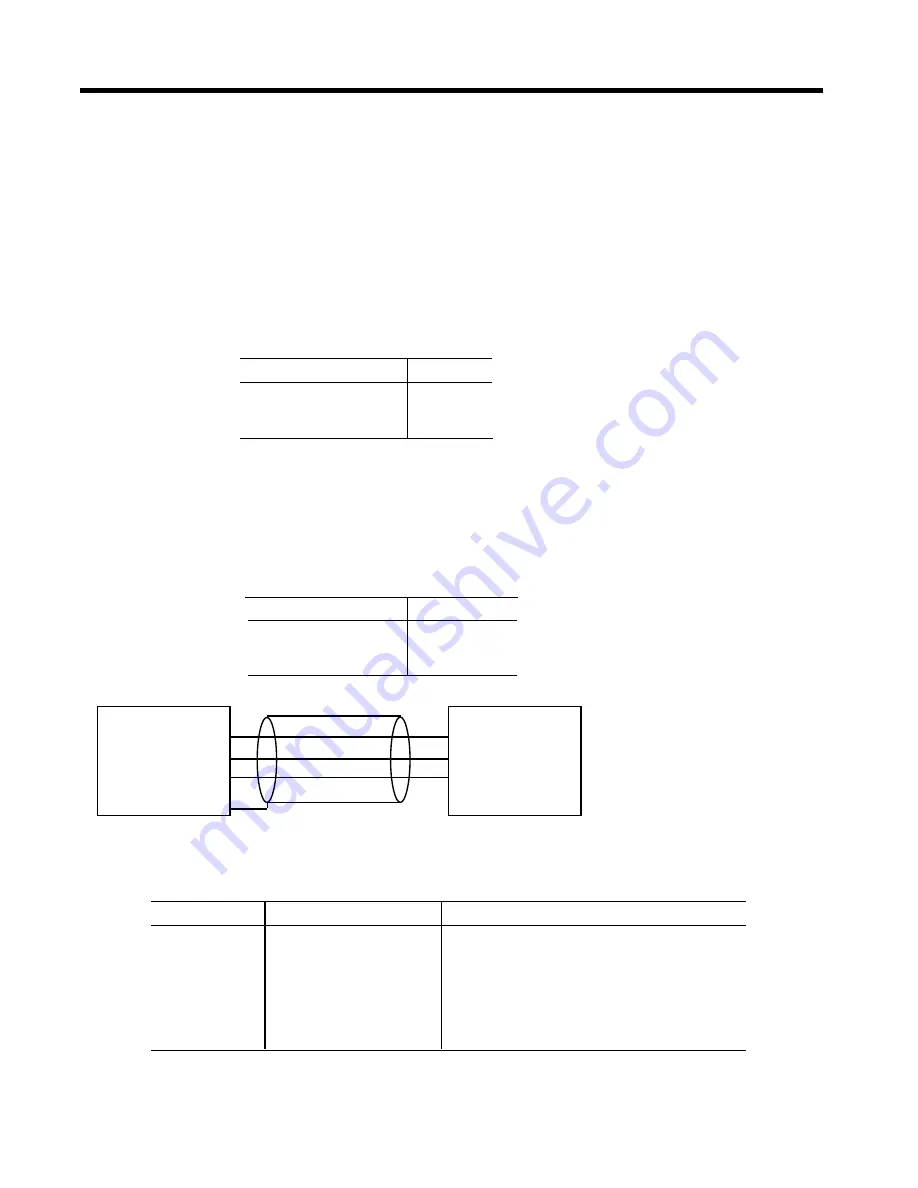
6. Appendix
The following table indicates the communications setting used by Astat Plus to perform data communication via its serial port
Name
Setting
Description
Baud Rate
9600 bps
Bits per second transmission rate
Parity
None
Data error checking method
Data Bits
8
Number of data bits in each transmission
Start Bits
1
Number of bits to indicate beginning of transmission
Stop Bits
2
Number of bits to indicate ending of transmission
Data
ASCII / RTU
Communications protocol used
Handshaking
None
No need to request to send or clear to send
Computer
2
TD
ASTAT Plus
Pin
RS232 cable
6-4
6-2. Serial Communication
Astat Plus is able to send and receive data through a serial RS232 port. Within this port Astat Plus communicates with a host (which can be
either with a PC / PLC or an industrial fieldbus system) to be started, stopped, programmed or checked.
3 different communication possibilities are available:
- Connection to a PC / PLC using ASCII protocol. (PC Windows communication software tool available)
- Connection to a PC / PLC using Modbus RTU protocol.
- Connection to industrial fieldbus systems (Profibus DP / DeviceNet). In this case it is necessary to use an external communications
module. Astat Plus communicates with this module using Modbus RTU protocol, and the module acts as a gateway to the fieldbus system.
In order to select the desired procedure the user must change the value of the parameter XP.
Protocol
XP setting
ASCII
0
Modbus RTU
1
Profibus/DeviceNet
2
6-2-1. RS232 port, wiring and communications settings
RS232 is an operating standard of communication only in terms of electrical characteristics (voltage, timing, etc.) while the communication
procedures are defined by different protocols (Modbus, ASCII, Profibus, DeviceNet, etc.).
The maximum allowed RS232 cable length is 3 meters. Astat Plus uses a connector with only 3 pins: TD, RD, SG.
Astat Terminal
Name
TD
Transmit Data
RD
Receive Data
SG
Signal Common
RS232 connector
3
RD
D-SUB9
5
SG










































